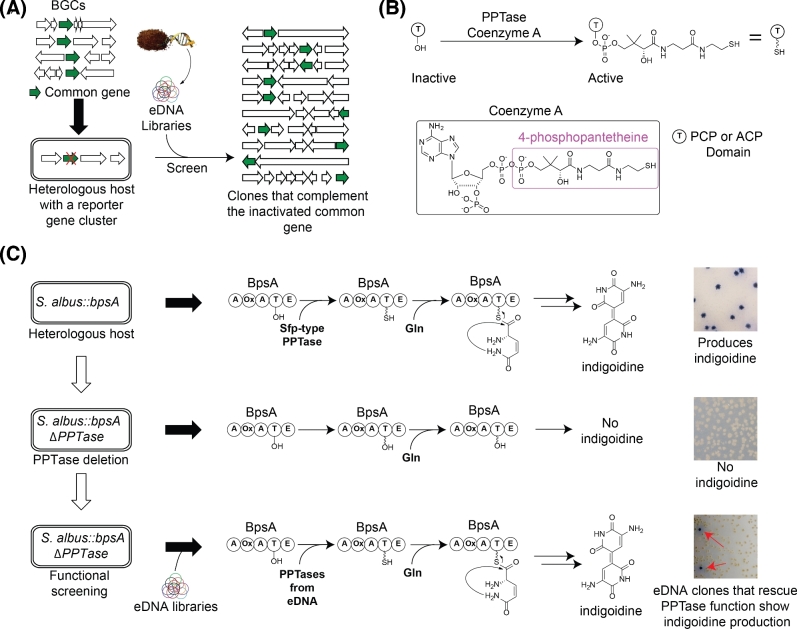Figure 1.
Identification of eDNA clones containing biosynthetic genes by using complementation of functionally redundant biosynthetic genes. (A) Complementation of functionally redundant genes found in natural product biosynthesis can be used to identify eDNA clones containing BGCs (Owen et al.2012; Charlop-Powers et al.2013). (B) One example of a family of functionally redundant BGC-associated enzymes is the PPTase family that is responsible for the transfer of 4-phosphopantetheine from coenzyme A to PCP and ACP domains in non-ribosomal peptide and polyketide synth(et)ases, respectively. (C) Production of the blue pigment, indigoidine, by the NRPS encoded by bpsA (the blue pigment synthase A gene) is dependent on the post-translational modification by a PPTase enzyme (top panel). Deletion of the Sfp-like PPTase gene in S. albus abrogates heterologous production of indigoidine by BpsA in this host (middle panel). Complementation of PPTase function in a PPTase knockout background expressing bpsA (e.g. S. albus::bpsA ΔPPTase) will restore indigoidine production (bottom panel). Color production by eDNA clones hosted in S. albus::bpsA ΔPPTase can be used to identify PPTase expressing clones and in turn clones containing biosynthetic genes.

